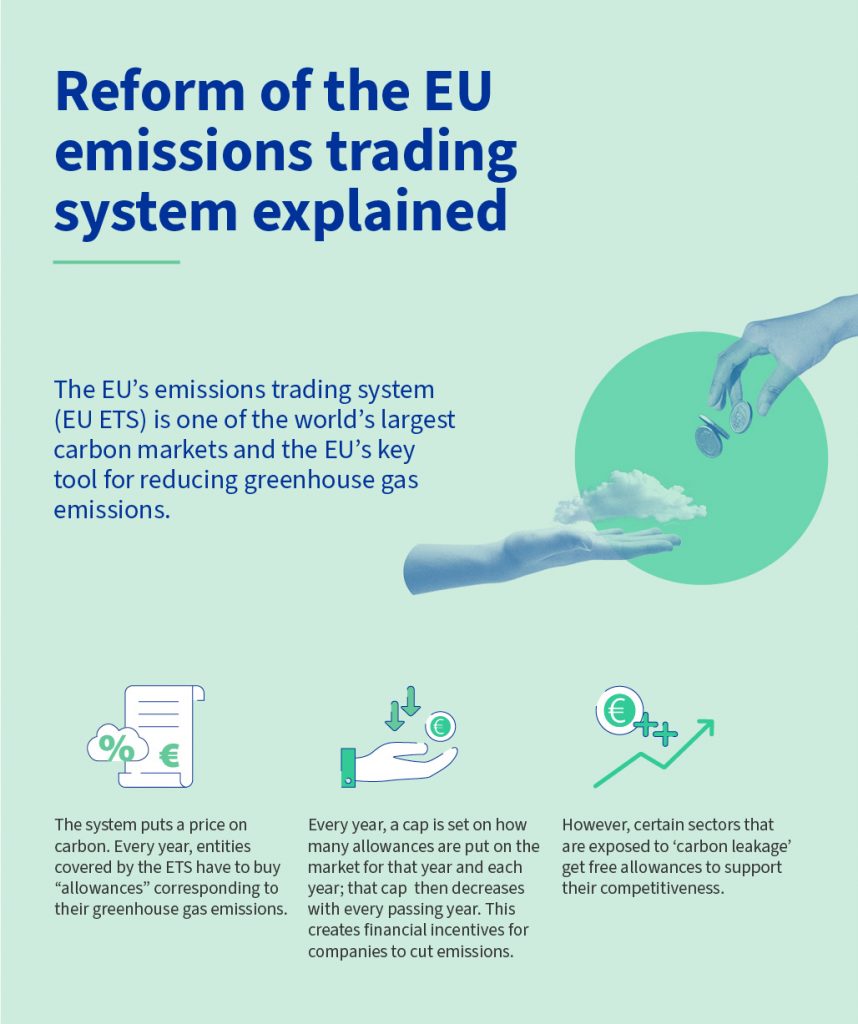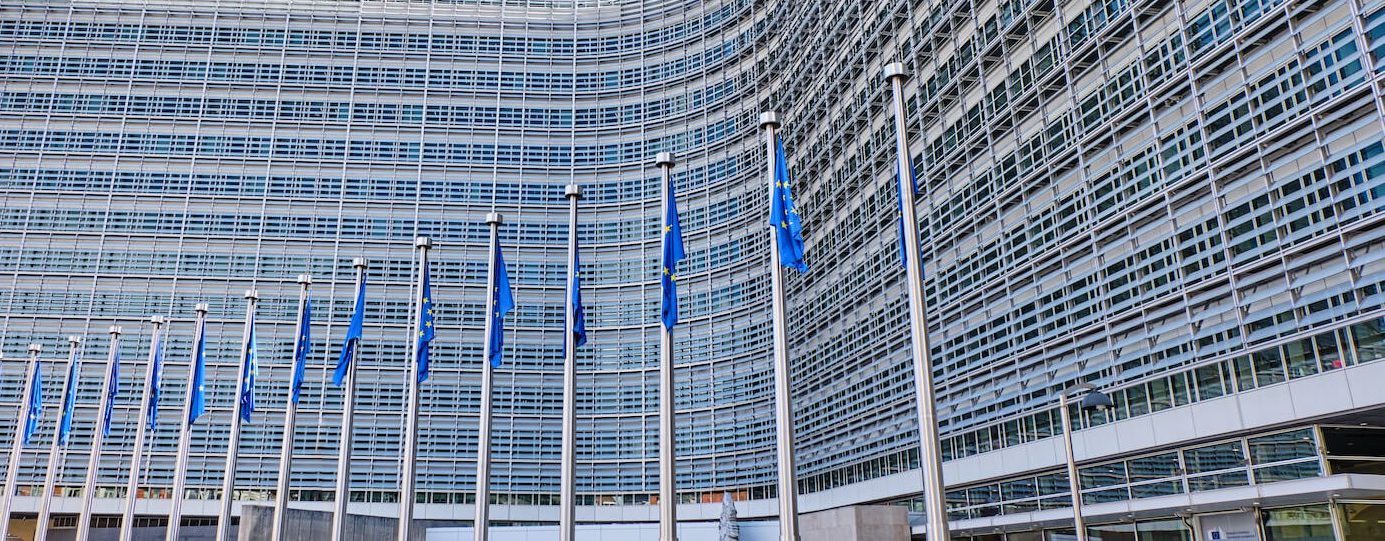On 18th December, the Council and the European Parliament reached an agreement to reform the UE’s Emissions Trading System market and to establish a new Social Fund for climate change. The deal, which would be adopted in both institutions to come true, is considered a step forward to achieving climate neutrality in 2050. Specifically, the Council and Parliament agreed to increase the overall ambition of greenhouses gas (GHG) emissions reductions by 2030 in the sectors covered by the ETS to 62%, compared to 2005: a more ambitious target than the proposal of the Commission: a more ambitious target than the proposal of the Commission. Indeed, its «Fit for 55» package – adopted by the Council on 29th June 2022 – would enable the European Union to reduce its net GHG emissions by at least 55% by 2030 compared to 1990 levels and to achieve climate neutrality in 2050.
“Overall, the agreement represents the most advanced climate legislation in the world: its success will depend on the member states’ willingness to act effectively”
Massimo Tavoni – RFF-CMCC European Institute on Economics and the Environment (EIEE) and Politecnico di Milano
The Emissions Trading System (ETS), which enshrines the polluter pays principle, is the EU’s main tool in addressing emissions reductions, covering about 40% of the EU’s total CO2 emissions. By putting a price on GHG emissions, the ETS has triggered significant reductions in EU emissions, as industries are incentivised to reduce their emissions and invest in climate-friendly technologies. Since its introduction in 2005, the EU’s emissions have decreased by 41%. The new agreement provides for a one-off reduction to the EU-wide quantity of allowances of 90 Megatonnes equivalents of CO2 in 2024 and 27 Mt in 2026 in combination with an annual reduction of allowances by 4.3% from 2024-27 and 4.4% from 2028-30. In this way, the free allowances to industries in the ETS will be completely phased out in 2034. Additional transitional free allocations can be granted under certain conditions to the district heating sector in certain member states to encourage investments in decarbonising the sector. A separate new ETS-2 for fuel for road transport and buildings that will put a price on emissions from these sectors will be established by 2027. This is one year later than proposed by the Commission. As requested by Parliament, fuel for other sectors, such as manufacturing, will also be covered. In addition, ETS-2 could be postponed until 2028 to protect citizens if energy prices are exceptionally high. Furthermore, a new price stability mechanism will be set up to ensure that if the price of an allowance in ETS-2 rises above 45€, 20 million additional allowances will be released.
As regards sectors vulnerable to carbon leakage – cement, aluminium, fertilisers, electric energy production, hydrogen, iron, steel and other goods produced in the EU intended for export to non-EU countries – the Council and Parliament agreed to end free allowances over a nine-year period. The so-called Carbon Border Adjustment Mechanism (CBAM) aims to equate the production cost of European companies, which pay the price for these products for carbon emissions based on the EU ETS system, with that of imported products from countries where this type of mechanism does not exist. Between 2026 and 2034, the CBAM will apply only to the proportion of emissions that does not benefit from free allowances under the ETS, to fully respect the World Trade Organisation’s rules. The free allowances will be phased-out at a slower rate at the beginning and an accelerated rate at the end of this period. Support for the decarbonisation of these sectors will be possible through the Innovation Fund. In addition, an estimated 47.5 million allowances will be used to raise new and additional financing to address any risk of export-related carbon leakage. By 2025, the Commission will assess the impact of the CBAM, including on carbon leakage risks, and see whether additional measures are needed.

Moreover, the Council and Parliament agreed to establish a Social Climate Fund to support vulnerable households, micro-enterprises and transport users to cope with the price impacts of an emissions trading system for buildings and road transport and fuels for additional sectors. The fund would be part of the EU budget and fed by externally assigned revenues up to a maximum amount of € 65 billion, with an additional 25% covered by national resources (amounting to an estimated total of € 86.7 billion). The fund would be established over the period 2026-2032, with the eligibility of expenditures from 1 January 2026 based on auctioning of 50 million allowances in 2026 to allow for support at the start of the fund while the new emission trading system would provide for the financing of the fund as of 2027. Each member state would submit to the Commission a “social climate plan” containing the measures and investments they intend to undertake to cushion the impacts of the new emission trading system on vulnerable households. Such measures could include increasing the energy efficiency of buildings, renovating buildings, decarbonising buildings’ heating and cooling, and uptake of zero-emission and low-emission mobility and transport, and measures providing direct income support in a temporary and limited manner.
“The Fit for 55 package in the Parliament essentially confirms what was proposed by the EU Commission, in terms of ambition, not just for emissions reduction but for its broader legislative implications”, explains Massimo Tavoni, director of the RFF-CMCC European Institute on Economics and the Environment (EIEE) and professor at Politecnico di Milano. The legislation reaffirms the key role of the Emission Trading Scheme (ETS), and introduces new provisions. “The CBAM is meant to foster international ambition and protect the EU industry but needs to be aligned with other major economies such as USA and China to avoid turning into a protectionist instrument which can lead to a trade war. The creation of a second ETS is the most controversial since it affects sectors that are politically sensitive, such as transport and buildings. The social climate fund is essential for protecting vulnerable households and businesses from energy price shocks but needs to be designed and implemented well in the member states, especially in Italy where carbon market revenues have so far not been used for climate justice”, Tavoni says. “Overall, the agreement represents the most advanced climate legislation in the world: its success will depend on the member states’ willingness to act effectively”.
Picture by Alan Frijns via Pixabay






